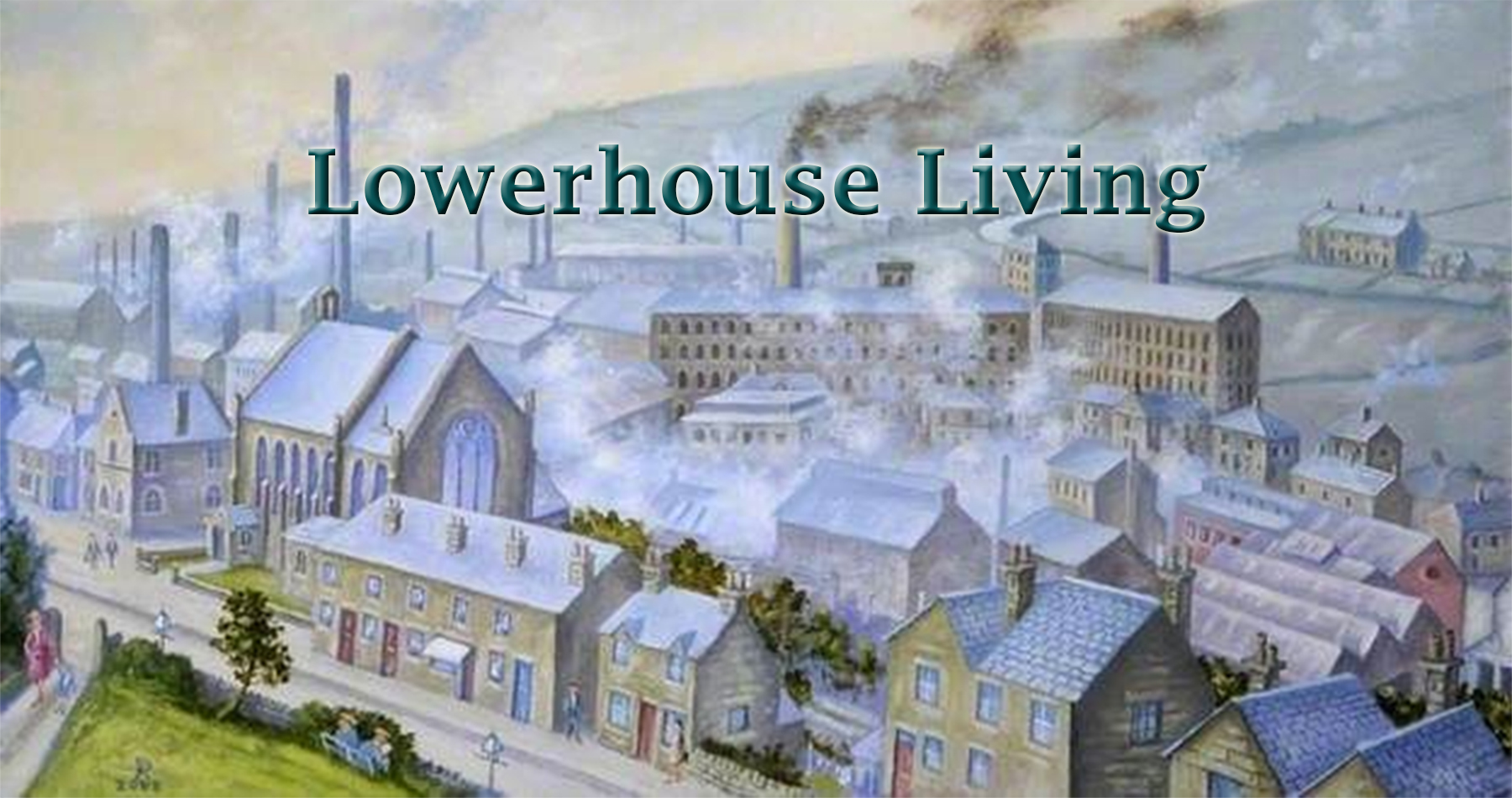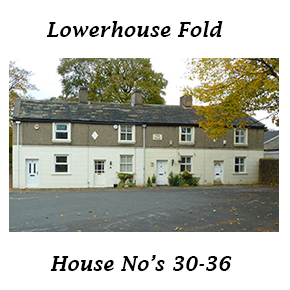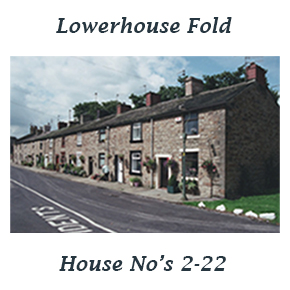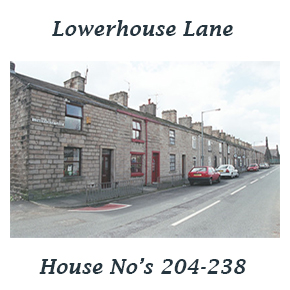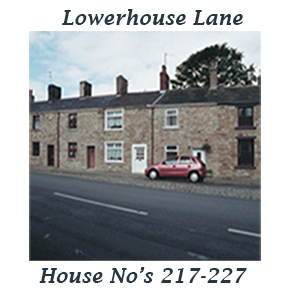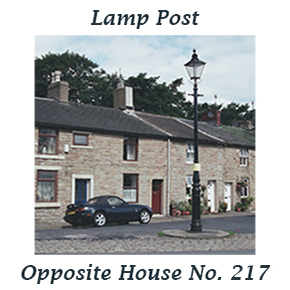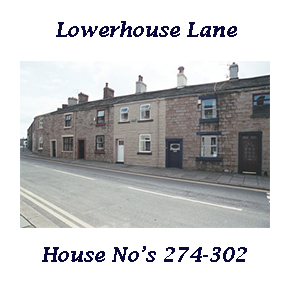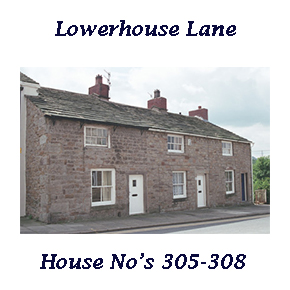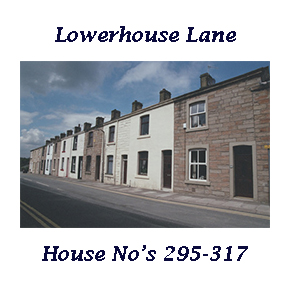Lowerhouse Mile - (Housing Stock)
 (Page 1 of 2)
(Page 1 of 2) 
Lowerhouses, on the western edge of Burnley, was developed by Peel and Yates in 1795 as two water-powered cotton mills. The mills were sold to Nathaniel Dugdale in 1813, who with his three sons, began printing calico cloth in 1819, and a new five storey spinning mill was built in 1836 (Ashmore 1982, 193).
Click houses of interest
Rows of two-storey cottages were built for the factory workers, both around the works and to the south east in Lowerhouse Fold (Hall 1976). Within Lowerhouse there was a handloom weavers' settlement along with industrial workers' houses associated with the former mills. A millworkers' colony also came about due to the establishment of factories in the vicinity in 1795.
The earliest cottages, at 304 to 308 Lowerhouse Lane, date to around 1800, and were probably for workers at the first cotton mill, built in 1785. The other cottages were built in the 1820s and 1830s, and the mid-nineteenth century (Ashmore 1982, 193).
Several rows of cottages and a nineteenth century lamp-post on Lowerhouse Lane are Grade II listed. The area includes two rows backing onto one another, with a cobbled service road between that is accessed by an archway at the north-east end. None of the houses have front gardens, although two rows are fronted by stone-flagged pathways rather than streets accessible to vehicles.
The area at the western edge of Lowerhouse also comprises cottages built for mill workers. The longest row fronts onto Bear Street, an unmade road, and is accessed to the rear by an unmade service road. The cottages are stone-built and of two storeys; some are rendered and some have small front gardens, although the majority front directly onto the street. One row comprises four cottages that are of two storeys but are shorter than the others, these houses also have particularly small windows, and are set below the present road level.

